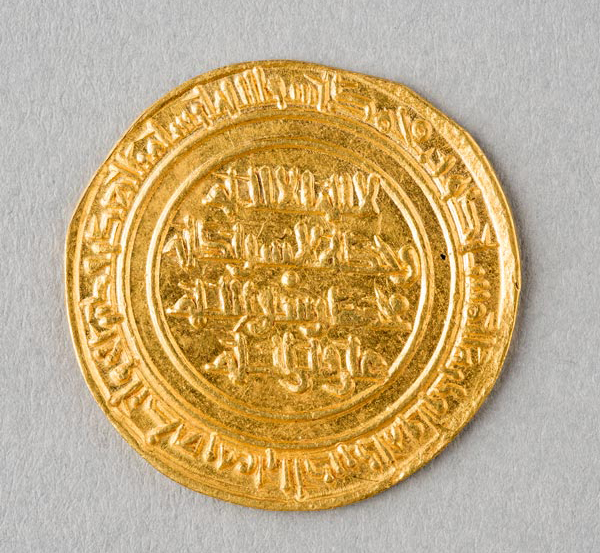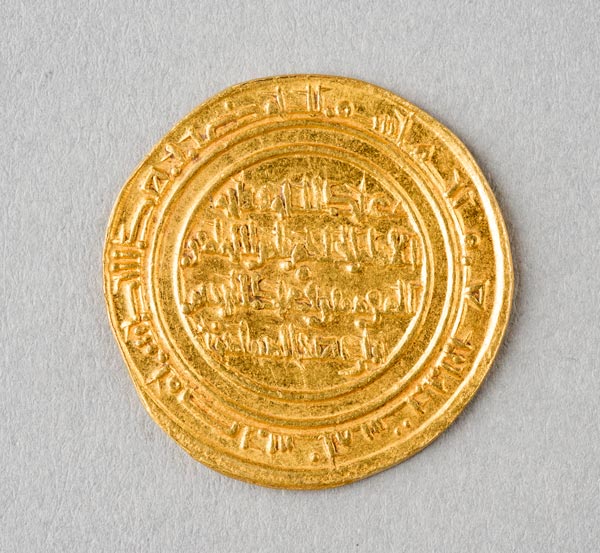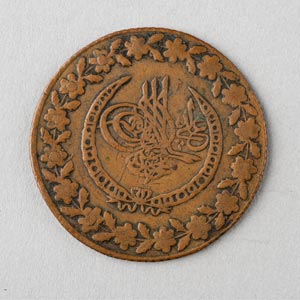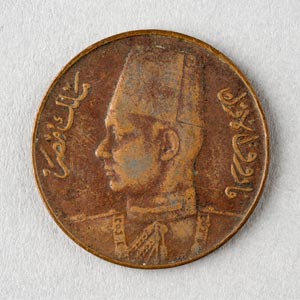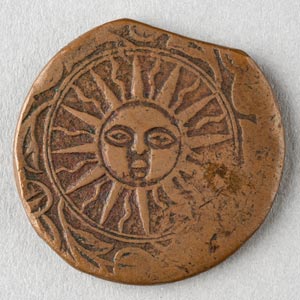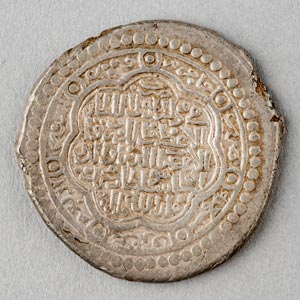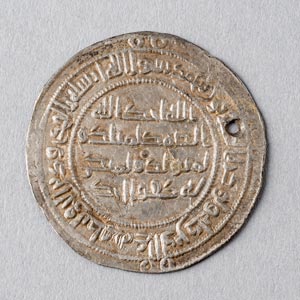Fatimid Dinar
The Show

Fatimid dinar 11th century, Egypt Gold Kelsey Museum of Archaeology, 2009.1.102
Once the basic layout for Islamic epigraphic coins was established, the design changed very little between the 8th and 13th centuries. However, the coins produced under the Fatimid dynasty of Egypt (909–1171) showcase a new layout. The text is often organized into concentric rings rather than horizontal lines, as can be seen in this gold coin (dinar) minted during the rule of al-Hakim (996–1021). Perhaps this shift in coinage design was meant to visually differentiate this Shi‘i dynasty from its Sunni neighbors while concurrently serving as a means by which Fatimid rulers could assert their power through economic exchange and trade.
Bibliography: Wasserstein 1993; Heidemann 2010; Bates 1982, 30–31; Bates and Darley-Doran 1985, 370–371, figs. 443–444; Miles 1951b, 16–22; and Nicol 2006.
Return to the Show